Home>diy>Building & Construction>What Is The Number One Shield Against Hazards On The Construction Site
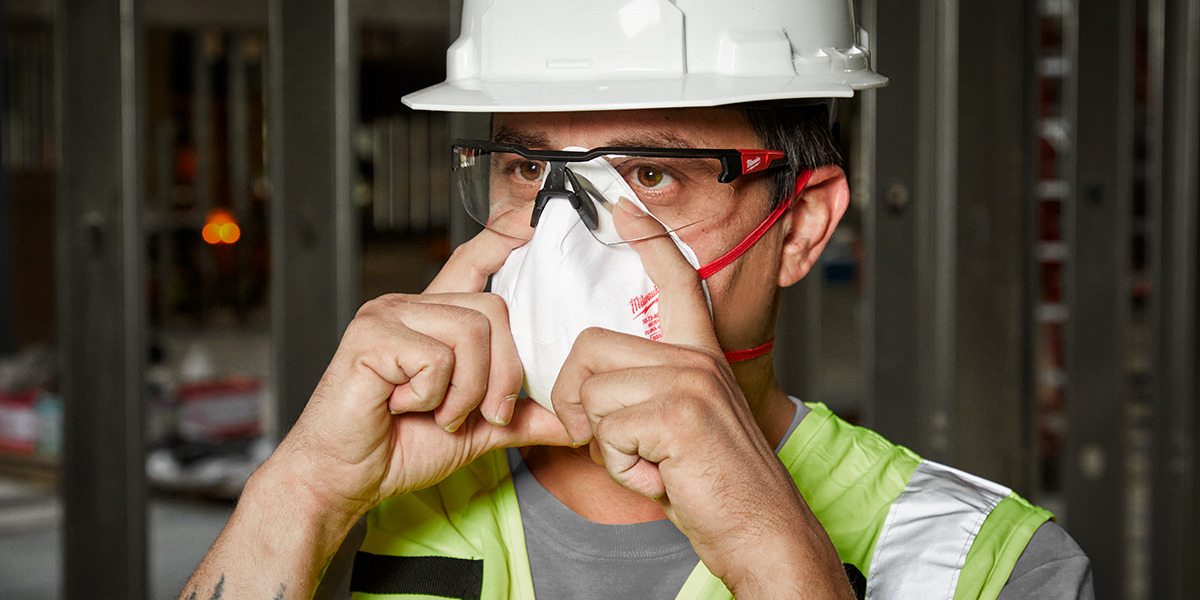

Building & Construction
What Is The Number One Shield Against Hazards On The Construction Site
Modified: January 9, 2024
Discover the top shield for hazards on the construction site with our comprehensive guide. Learn how building construction practices ensure safety and minimize risks.
(Many of the links in this article redirect to a specific reviewed product. Your purchase of these products through affiliate links helps to generate commission for Storables.com, at no extra cost. Learn more)
Introduction
When it comes to construction sites, safety should always be the number one priority. With the various hazards that exist in this high-risk environment, it is crucial for construction workers to be equipped with the knowledge and resources necessary to protect themselves. One of the most effective ways to safeguard against these hazards is through the use of Personal Protective Equipment (PPE).
PPE serves as a shield, providing a layer of defense against potential dangers that workers may encounter on construction sites. It includes a range of specialized equipment designed to protect different parts of the body, such as the head, eyes, ears, lungs, hands, and feet. By wearing the appropriate PPE, construction workers can greatly reduce the risk of injury or illness and ensure their safety on the job.
In this article, we will explore the importance of safety on construction sites and delve into the various hazards that workers may face. We will then focus on the different types of PPE used in construction and discuss their significance in protecting against these hazards. Finally, we will touch on the proper usage, maintenance, and training related to PPE, emphasizing the need for comprehensive education in the construction industry.
Now, let’s delve into the world of construction site safety and discover the number one shield against hazards: Personal Protective Equipment.
Key Takeaways:
- Prioritizing safety on construction sites through proper usage of Personal Protective Equipment (PPE) creates a safer work environment, reduces the risk of injuries and illnesses, and minimizes financial and reputational costs associated with accidents.
- Comprehensive training and education on PPE empower construction workers to effectively utilize and maintain their protective equipment, fostering a safety-conscious culture and ensuring a safer working environment on construction sites.
Read more: What Are The Hazards In Construction
Importance of Safety on Construction Sites
Construction sites are dynamic and busy environments with numerous potential hazards that can cause injuries, accidents, and even fatalities. Therefore, prioritizing safety is crucial to protect the well-being of workers and maintain a productive and efficient work environment. Here are some key reasons why safety is of utmost importance on construction sites:
- Worker Protection: The primary reason for emphasizing safety on construction sites is to protect the workers themselves. Construction work involves handling heavy machinery, working at heights, and being exposed to various materials and substances. By implementing safety measures and providing proper training, workers can minimize the risk of accidents, injuries, and long-term health issues.
- Legal Obligations: Construction companies have a legal and moral obligation to provide a safe working environment for their employees. Regulations and guidelines set by local authorities and industry organizations specify the standards and requirements for workplace safety. Failure to comply with these regulations can result in legal consequences, fines, and damage to the company’s reputation.
- Cost Reduction: Investing in safety measures and providing PPE may require initial expenses, but it can significantly reduce financial burdens in the long run. Accidents and injuries can lead to medical costs, legal fees, and insurance claims, not to mention project delays and increased liability. By prioritizing safety, construction companies can avoid these avoidable costs and maintain a more financially stable operation.
- Efficiency and Productivity: Safety measures go hand in hand with productivity. When workers feel safe and confident in their working conditions, they can focus on their tasks with peace of mind. Prioritizing safety leads to a more efficient workflow, better task management, and enhanced productivity. Conversely, accidents and injuries can disrupt operations, cause delays, and create a negative work environment.
- Reputation: Safety records and practices are important considerations for clients, contractors, and stakeholders when choosing construction companies. A strong safety culture demonstrates professionalism, reliability, and a commitment to worker well-being. On the other hand, a poor safety record can tarnish a company’s reputation, leading to a loss of business opportunities and potential clients.
By understanding the importance of safety on construction sites, companies can create a culture that prioritizes the well-being of workers and promotes a safe and productive work environment. In the next section, we will explore the different hazards that construction workers may encounter and understand the need for Personal Protective Equipment (PPE) to mitigate the associated risks.
Understanding Hazards on Construction Sites
Construction sites present a myriad of hazards that can jeopardize the safety and well-being of workers. Understanding these hazards is essential for implementing appropriate safety measures and selecting the right Personal Protective Equipment (PPE). Let’s examine some common hazards found on construction sites:
- Falls: Working at heights is a frequent task in construction, and falls from ladders, scaffolding, or roofs can result in severe injuries or fatalities. Unprotected edges, inadequate fall protection systems, and slippery surfaces can increase the risk of falls.
- Being Struck By Objects: Construction sites are bustling with activity, and workers are often in close proximity to heavy machinery, falling debris, or moving vehicles. The risk of being struck by objects, such as tools, equipment, or materials, is significant without proper precautions and safety barriers.
- Electrical Hazards: Construction involves working with electricity, wiring, and power tools. Improper handling, faulty equipment, or contact with live wires can result in electric shocks, burns, or even electrocution.
- Hazardous Materials: Construction sites frequently contain various hazardous materials, including chemicals, gases, asbestos, and lead. Workers can be exposed to these substances through inhalation, ingestion, or skin contact, leading to respiratory problems, poisoning, or long-term health issues.
- Noise and Vibrations: Construction sites are known for their high levels of noise and vibrations generated by heavy machinery, power tools, and equipment. Prolonged exposure to excessive noise levels can cause hearing loss, while vibrations can lead to muscle and joint disorders.
- Structural Collapses: Weak or unstable structures pose a significant risk to construction workers. Collapse of scaffolding, trenches, or buildings can result in serious injuries or fatalities.
- Heat and Cold Stress: Extreme temperatures can impact worker safety and health. Overexposure to heat can cause heat exhaustion, heat stroke, or dehydration, while working in cold conditions can lead to frostbite, hypothermia, or reduced dexterity.
These are just a few examples of the hazards that construction workers face on a daily basis. It is vital for construction companies to assess and mitigate these risks by implementing safety protocols, providing proper training, and ensuring the use of appropriate Personal Protective Equipment (PPE). In the following section, we will explore the different types of PPE used on construction sites to protect against these hazards.
The Number One Shield Against Hazards: Personal Protective Equipment (PPE)
When it comes to protecting construction workers from the various hazards on site, Personal Protective Equipment (PPE) plays a vital role. PPE acts as a shield, providing a barrier between the worker and potential dangers. It is the last line of defense against injuries, illnesses, and fatalities. Let’s explore why PPE is the number one shield against hazards on construction sites:
1. Protection for Specific Hazards: PPE is specifically designed to protect different parts of the body from specific hazards. It includes a range of equipment that is carefully selected to address the risks associated with the construction industry. From head protection to fall protection, each piece of PPE serves a crucial purpose in safeguarding workers.
2. Versatility and Adaptability: PPE is available in various forms, making it versatile and adaptable to different job tasks and requirements. Whether it is a hard hat to protect the head, safety goggles to shield the eyes, or steel-toed boots to safeguard the feet, PPE can be customized to suit the specific needs of the workers and the hazards they face.
3. Preventing Injuries and Illnesses: By wearing the appropriate PPE, workers can greatly reduce the risk of injuries and illnesses. For instance, a hard hat can protect the head from falling objects, safety glasses can prevent eye injuries from debris, and gloves can shield the hands from cuts or chemical exposure. PPE acts as a physical barrier that minimizes the impact of potential hazards.
4. Compliance with Regulations: Occupational health and safety regulations often require the use of PPE in construction environments. By ensuring that workers are properly equipped with the necessary PPE, construction companies can comply with legal requirements and avoid penalties. This demonstrates a commitment to the well-being of workers and contributes to a safe work culture.
5. Promoting Safety Awareness: The utilization of PPE on construction sites serves as a reminder and promotes a culture of safety. When workers see their colleagues wearing appropriate PPE, it reinforces the importance of personal safety and encourages others to follow suit. PPE acts as a visual cue, reminding everyone to remain vigilant and take the necessary precautions.
6. Confidence and Peace of Mind: Wearing the correct PPE gives workers the confidence to perform their tasks knowing that they are protected. It provides peace of mind, allowing them to focus on their work without worrying about potential hazards. This boosts morale, productivity, and overall job satisfaction.
Without a doubt, PPE serves as the number one shield against hazards on construction sites. However, it is important to recognize that simply providing PPE is not enough. Workers must be educated on the proper usage, maintenance, and limitations of the equipment. In the next sections, we will delve into the different types of PPE used on construction sites and discuss their significance in protecting against specific hazards.
Types of PPE Used on Construction Sites
Personal Protective Equipment (PPE) encompasses a wide range of specialized equipment designed to protect different parts of the body from hazards on construction sites. Each type of PPE serves a specific purpose in minimizing the risk of injuries and maintaining the safety of workers. Let’s explore the various types of PPE commonly used on construction sites:
1. Head Protection: Hard hats or safety helmets are essential for protecting the head from falling objects, impact, and electrical hazards. They are designed to absorb the force of any impact, reducing the risk of head injuries.
2. Eye and Face Protection: Safety glasses, goggles, and face shields protect the eyes and face from flying particles, sparks, chemical splashes, and harmful radiation. They help prevent eye injuries and maintain clear vision, ensuring workers can perform their tasks safely.
3. Hearing Protection: Construction sites are often noisy environments, exposing workers to loud and prolonged noise levels that can lead to hearing loss. Earplugs and earmuffs are used to reduce the impact of noise, shielding the ears from damaging sound levels and vibrations.
4. Respiratory Protection: Construction sites may contain hazardous substances, dust, fumes, or gases that can lead to respiratory problems or lung diseases. Respiratory protective equipment, such as disposable masks or respirators, filters the air and prevents workers from inhaling harmful particles.
5. Hand Protection: Gloves are essential for protecting the hands from cuts, abrasions, chemicals, and punctures. Construction workers often handle sharp tools, hazardous materials, and rough surfaces, making hand protection crucial for maintaining the integrity and safety of the hands.
6. Foot Protection: Construction sites pose a variety of foot hazards, including heavy objects, falling debris, and uneven terrain. Steel-toed boots or safety shoes protect the feet from crushing injuries, punctures, and electrical hazards, offering stability and support.
7. Fall Protection: Falls from heights are one of the most significant risks in construction. Fall protection equipment, such as harnesses, lanyards, and safety nets, is used to prevent serious injuries or fatalities by arresting falls and protecting workers from harm.
8. High-Visibility Clothing: Construction sites often have moving vehicles and machinery, making it crucial for workers to be visible at all times. High-visibility clothing, including vests or jackets with reflective strips, ensures that workers can be easily seen, reducing the risk of accidents.
These are just a few examples of the types of PPE used on construction sites. The selection of PPE depends on the specific hazards present in the work environment. Additionally, it is essential to choose PPE that adheres to the relevant safety standards and provides proper fit and comfort for the workers.
In the next sections, we will dive deeper into each type of PPE, discussing their features, benefits, and importance in protecting against the specific hazards found on construction sites.
Read more: What Is A Construction Site
Head Protection
Head protection is a vital component of Personal Protective Equipment (PPE) used on construction sites. The head is particularly vulnerable to injuries from falling objects, impact, and electrical hazards. To ensure the safety of construction workers, head protection in the form of hard hats or safety helmets is essential.
Features of Head Protection:
Hard hats or safety helmets are designed with specific features to provide effective head protection:
- Shell: The outer shell of a hard hat is made of tough and durable materials such as high-density polyethylene (HDPE) or strong thermoplastics. This shell is designed to withstand impact and provide a barrier between the head and potential hazards.
- Suspension System: Head protection features a suspension system, typically made of nylon or plastic straps, which ensures a secure fit and provides a cushioning effect. The suspension system helps absorb the force of impact, reducing the risk of head injuries.
- Visor: Some safety helmets are equipped with a built-in visor to protect the face from flying particles, sparks, or splashes. The visor is usually made of impact-resistant polycarbonate material and can be flipped up or down as needed.
- Accessories: Additional accessories like chin straps, rain gutters, and reflective strips can be attached to enhance the functionality and visibility of head protection.
Benefits of Head Protection on Construction Sites:
Head protection serves several crucial benefits for workers on construction sites:
- Falling Object Protection: One of the primary purposes of head protection is to shield workers from injuries caused by falling objects. Construction sites often involve work at heights where tools, equipment, or materials may accidentally fall. Hard hats or safety helmets provide a barrier and reduce the impact of falling objects, helping to prevent head injuries.
- Impact Resistance: Along with protecting against falling objects, head protection is designed to absorb the impact of a blow. Construction work can involve working in confined spaces, near overhead structures, or in areas with potential head-level hazards. The cushioning effect of safety helmets helps mitigate the force of impact, reducing the risk of skull fractures, concussions, or other serious head injuries.
- Electrical Hazards: In construction, there is a risk of exposure to electrical hazards. Safety helmets with dielectric properties provide electrical insulation, protecting workers against electric shocks. This is particularly important for workers involved in electrical work or working near exposed electrical components.
- Identification and Visibility: Many safety helmets come in various colors, allowing for easy identification and recognition of different work roles or ranks. Additionally, helmets with reflective strips enhance visibility, particularly in low-light conditions or areas with moving vehicles, making workers more visible and reducing the risk of accidents.
Maintenance and Replacement:
Proper maintenance and regular inspection of head protection are essential to ensure its effectiveness. Construction companies should establish guidelines for cleaning, inspecting, and replacing safety helmets when necessary. Any signs of damage, cracks, or deterioration should be addressed promptly, and helmets should be replaced as per the manufacturer’s recommendations.
Head protection is a fundamental component of PPE on construction sites, providing crucial protection against falling objects, impact, and electrical hazards. By wearing the appropriate hard hats or safety helmets, construction workers can significantly reduce the risk of head injuries, ensuring their safety and well-being on the job.
Eye and Face Protection
Eye and face protection is an essential component of Personal Protective Equipment (PPE) used on construction sites. The eyes and face are particularly vulnerable to injuries from flying debris, chemical splashes, sparks, and other hazards. To ensure the safety of construction workers, the use of appropriate eye and face protection, such as safety glasses, goggles, and face shields, is crucial.
Features of Eye and Face Protection:
Eye and face protection come in various forms, each with its unique features and benefits:
- Safety Glasses: Safety glasses feature impact-resistant lenses made from materials such as polycarbonate. They provide protection against flying particles, dust, and debris, while maintaining optical clarity. Safety glasses often have side shields for added peripheral protection and can be fitted with prescription lenses if needed.
- Goggles: Goggles offer a more comprehensive form of eye protection, sealing around the eyes to provide a barrier against chemical splashes, dust, and other hazards. Goggles are particularly effective in situations where there is a risk of liquid chemicals coming into direct contact with the eyes.
- Face Shields: Face shields consist of a plastic visor that extends from the forehead to below the chin, providing protection to the entire face. They offer a broader coverage than safety glasses or goggles and are effective in shielding against larger flying objects, sparks, or splashes. Face shields are often used in combination with other eye protection for enhanced safety.
Benefits of Eye and Face Protection on Construction Sites:
The use of eye and face protection provides several vital benefits for workers on construction sites:
- Protection from Flying Objects: Construction sites are dynamic environments where tools, materials, and debris may become airborne. Safety glasses, goggles, and face shields act as a physical barrier, preventing foreign objects from coming into contact with the eyes and face. They reduce the risk of eye injuries, such as corneal abrasions, foreign body penetration, or more severe damage that may lead to vision impairment.
- Chemical and Liquid Protection: Construction work may involve handling or working in proximity to hazardous chemicals or liquids. Goggles and face shields with splash guards protect the eyes and face from chemical splashes, corrosive substances, or harmful liquids. This prevents irritation, burns, or long-term damage to the eyes and surrounding facial tissues.
- Protection against Particulates and Dust: Construction activities can generate dust, fine particles, or other airborne irritants. Safety glasses and goggles provide a shield against these particulates, reducing the risk of eye irritation, dryness, or potential respiratory issues that may occur from the inhalation of airborne debris.
- Protection from Impact and Injury: Safety glasses, goggles, and face shields are designed to withstand impact and protect against injuries caused by blunt force or flying objects. By providing a physical barrier, they minimize the risk of fractures, lacerations, or severe trauma to the eyes and face.
- Compatibility with Other PPE: Eye and face protection are compatible with other forms of PPE, such as hard hats and respiratory equipment. They can be comfortably worn in conjunction with other gear, ensuring overall safety and minimizing any potential gaps in protection.
Maintenance and Use:
Proper maintenance and regular inspection of eye and face protection are essential to ensure their effectiveness. Construction companies should provide guidelines for cleaning, inspecting, and replacing safety glasses, goggles, and face shields when necessary. Additionally, workers should receive training on how to properly wear and adjust their eye and face protection to ensure a secure and comfortable fit.
Eye and face protection play a critical role in safeguarding construction workers from the numerous hazards present on construction sites. By wearing the appropriate protective gear, workers can significantly reduce the risk of eye injuries and facial damage, ensuring their safety and well-being while on the job.
Hearing Protection
Hearing protection is a crucial aspect of Personal Protective Equipment (PPE) on construction sites. Construction work often involves exposure to high levels of noise generated by heavy machinery, power tools, and other equipment. Prolonged exposure to excessive noise levels can lead to permanent hearing loss and other related health issues. To safeguard the hearing health of construction workers, the use of appropriate hearing protection, such as earplugs and earmuffs, is essential.
Types of Hearing Protection:
There are two primary types of hearing protection commonly used on construction sites:
- Earplugs: Earplugs are small devices made of soft foam, silicone, or other materials that can be inserted into the ear canal. Earplugs create a barrier to prevent noise from reaching the delicate structures of the ear.
- Earmuffs: Earmuffs consist of ear cups connected by a headband. The cups are usually lined with sound-absorbing material and create a seal around the ears to effectively block or reduce noise. Earmuffs provide a more comprehensive coverage and can be easily worn over other PPE, such as hard hats or safety glasses.
Benefits of Hearing Protection on Construction Sites:
The use of hearing protection provides a range of benefits for workers on construction sites:
- Prevention of Noise-Induced Hearing Loss: Prolonged exposure to high levels of noise can damage the delicate structures of the inner ear, leading to permanent hearing loss. Hearing protection, such as earplugs and earmuffs, reduces the amount of noise reaching the ear, thereby mitigating the risk of hearing damage and maintaining long-term hearing health.
- Increased Focus and Concentration: Excessive noise can be distracting and negatively impact workers’ ability to concentrate and focus on their tasks. By reducing noise levels, hearing protection helps create a more conducive work environment, promoting better concentration and productivity.
- Prevention of Tinnitus: Tinnitus is a condition characterized by a ringing or buzzing sensation in the ears, often associated with exposure to loud noise. Wearing appropriate hearing protection can significantly reduce the risk of developing tinnitus, improving overall ear comfort and well-being.
- Compliance with Occupational Regulations: Many countries have established occupational health and safety regulations that specify permissible noise exposure limits and mandate the use of hearing protection in noisy work environments. By providing and ensuring the use of appropriate hearing protection, construction companies can comply with these regulations and avoid legal consequences.
- Compatibility with Other PPE: Hearing protection, such as earplugs or earmuffs, can be easily worn in conjunction with other PPE, such as hard hats, safety glasses, or respiratory protection. This compatibility ensures that workers can maintain full protection against multiple hazards while on the job.
Maintenance and Use:
To ensure the effectiveness of hearing protection, proper maintenance and use are essential:
- Cleaning: Regularly clean earplugs or earmuffs according to the manufacturer’s instructions to prevent the accumulation of dust, debris, or earwax, which can hinder their effectiveness.
- Replacement: Depending on the type and frequency of use, hearing protection should be replaced periodically. Foam earplugs, for example, may need to be replaced after each use, while earmuffs may have a longer lifespan. Regular inspection is crucial to detect any signs of wear or damage that may compromise their effectiveness.
- Proper Fit and Use: Workers should receive training on how to properly insert and fit earplugs or adjust earmuffs to ensure a secure and comfortable fit. It is essential to wear hearing protection consistently in loud environments and follow any additional guidance provided by the manufacturer or supervisor.
Hearing protection is an integral part of ensuring the overall well-being of construction workers. By using appropriate hearing protection, workers can effectively mitigate the risk of noise-induced hearing loss, maintain focus and concentration, and foster a safe and healthy work environment on construction sites.
Always wear your personal protective equipment (PPE) on the construction site. This includes hard hats, safety glasses, gloves, and steel-toed boots to protect against hazards.
Respiratory Protection
Respiratory protection is a critical aspect of Personal Protective Equipment (PPE) on construction sites. Construction work often involves exposure to various hazardous substances, including dust, fumes, gases, and airborne particles. Inhalation of these substances can lead to respiratory issues, lung diseases, and other long-term health problems. To safeguard the respiratory health of construction workers, the use of appropriate respiratory protection, such as respirators and masks, is essential.
Types of Respiratory Protection:
There are different types of respiratory protection available to address various hazards on construction sites:
- Disposable Masks: Disposable masks, also known as filtering facepiece respirators, provide protection against particulate matter, including dust, pollen, and other airborne particles. They are lightweight, disposable, and often equipped with adjustable nose clips and elastic bands to ensure a secure fit.
- Half-Face Respirators: Half-face respirators cover the nose and mouth and provide a higher level of protection than disposable masks. They are designed to filter out both particulate matter and harmful gases or vapors. Half-face respirators typically have replaceable filters or cartridges that can be selected based on the specific hazards present.
- Full-Face Respirators: Full-face respirators cover the entire face, including the eyes, nose, and mouth. They provide the highest level of respiratory protection and are suitable for environments with more severe hazards, such as exposure to toxic gases or chemicals. Full-face respirators often feature replaceable filters or cartridges and a transparent visor for improved visibility.
Benefits of Respiratory Protection on Construction Sites:
The use of respiratory protection provides several vital benefits for workers on construction sites:
- Protection from Inhalation Hazards: Construction sites can expose workers to various inhalation hazards, including dust, fumes, gases, and harmful airborne particles. Respiratory protection, such as masks or respirators, filters the air before it is inhaled, reducing the risk of respiratory illnesses, lung diseases, and other potential health issues.
- Prevention of Airborne Diseases: Dust and other airborne particles may contain bacteria, viruses, or other pathogens that can cause respiratory infections or diseases. Respiratory protection acts as a barrier, preventing the inhalation of these contaminants and reducing the risk of airborne diseases among construction workers.
- Protection against Harmful Gases and Chemicals: Construction sites may generate or expose workers to toxic gases, vapors, or hazardous chemicals. Half-face or full-face respirators equipped with appropriate filters or cartridges can effectively remove these harmful substances from the air before inhalation, ensuring the respiratory health and safety of workers.
- Reduced Respiratory Discomfort: Using respiratory protection can significantly reduce respiratory discomfort caused by exposure to dusty or polluted environments. Masks and respirators prevent the inhalation of irritants, improving overall respiratory comfort and reducing the risk of coughing, wheezing, or shortness of breath caused by environmental factors.
- Compliance with Regulations: Many countries have established occupational health and safety regulations that specify permissible exposure limits for hazardous substances. These regulations often mandate the use of respiratory protection in situations where exposure to harmful substances is unavoidable. By providing and ensuring the use of appropriate respiratory protection, construction companies can comply with these regulations and prioritize worker safety.
Maintenance and Use:
Proper maintenance and use of respiratory protection are crucial to their effectiveness:
- Fitting and Seal: It is important to ensure that masks or respirators fit properly and form a seal against the face. This ensures that the majority of the inhaled air passes through the filters, reducing the risk of exposure. Workers should receive training on how to properly fit and wear respiratory protection.
- Filter Replacement: Filters or cartridges in respirators should be regularly replaced to maintain their effectiveness. The frequency of replacement depends on the type of filter and the specific work environment. Regular inspection is necessary to detect any signs of wear or damage in the respiratory protection equipment.
- Cleaning and Storage: Disposable masks should be discarded after each use, while reusable masks or respirators should be cleaned and stored according to the manufacturer’s instructions. Proper cleaning and storage help maintain the integrity of the equipment and extend its lifespan.
Respiratory protection is a critical aspect of ensuring the overall well-being of construction workers. By using appropriate respiratory protection, workers can effectively mitigate the risk of respiratory illnesses, lung diseases, and other health issues caused by inhalation hazards on construction sites. Prioritizing respiratory health contributes to a safer and healthier working environment for everyone involved in construction projects.
Read more: What To Wear To A Construction Site
Hand Protection
Hand protection is a crucial element of Personal Protective Equipment (PPE) on construction sites. Construction work often involves handling sharp objects, abrasive materials, chemicals, and other potential hazards that can cause hand injuries. To safeguard the hands from cuts, punctures, abrasions, chemical exposure, and other risks, the use of appropriate hand protection, such as gloves, is imperative.
Types of Hand Protection:
There are various types of gloves available to address different hazards on construction sites:
- Disposable Gloves: Disposable gloves, typically made from latex, vinyl, or nitrile, are suitable for tasks that require short-term protection. They offer a barrier against chemicals, dirt, and minimal hand protection against cuts or abrasions. Disposable gloves are commonly used when handling hazardous materials or for tasks with a high risk of contamination.
- Cut-Resistant Gloves: Cut-resistant gloves are designed to provide protection against sharp objects, such as metal, glass, or sharp tools. These gloves are made from materials such as Kevlar, Dyneema, or other high-performance fibers that offer excellent cut resistance. Cut-resistant gloves are crucial in tasks that involve handling sharp edges or materials.
- Chemical-Resistant Gloves: Chemical-resistant gloves are designed to protect against chemical hazards. These gloves are made from materials that resist penetration or degradation from various chemicals. They provide protection against corrosive substances, solvents, acids, and other harmful chemicals typically encountered in construction tasks.
- Heat-Resistant Gloves: Heat-resistant gloves are specially designed to protect against high temperatures and thermal hazards. They are made from materials such as leather, aramid, or specialized heat-resistant fabrics that provide insulation and protection against burns or thermal contact.
- General-Purpose Work Gloves: General-purpose work gloves are versatile gloves suitable for a wide range of construction tasks. They offer basic protection against cuts, abrasions, and impacts. These gloves are often made from materials such as leather, synthetic leather, or heavy-duty fabrics with reinforced palm and fingers for improved durability.
Benefits of Hand Protection on Construction Sites:
The use of hand protection provides several important benefits for workers on construction sites:
- Protection against Cuts and Punctures: Construction work often involves handling sharp objects, tools, or materials that can cause cuts or puncture wounds. Gloves with cut-resistant properties provide a protective barrier, reducing the risk of injuries and potential complications.
- Chemical and Hazardous Substance Protection: Chemical-resistant gloves protect against harmful substances, including corrosive chemicals, solvents, or toxins. They prevent the penetration of hazardous substances onto the skin and minimize the risk of chemical burns, skin irritation, or absorption.
- Abrasion and Impact Resistance: General-purpose work gloves offer protection against abrasions, impacts, and minor hand injuries. They serve as a barrier against rough surfaces, reducing the risk of cuts, bruises, or contusions caused by friction or impact.
- Improved Grip and Dexterity: Many gloves are designed to provide enhanced grip and dexterity, allowing workers to handle tools, equipment, or materials with precision and control. Gloves with textured surfaces or specialized grip patterns help maintain a secure hold, reducing the risk of dropping objects or losing control.
- Protection from Extreme Conditions: Specialized gloves, such as heat-resistant gloves, protect against high temperatures, sparks, or thermal hazards. These gloves insulate the hands from heat and minimize the risk of burns or thermal injuries in tasks involving hot surfaces or heated materials.
- Hand Hygiene and Contamination Prevention: Disposable gloves serve as a barrier that helps maintain hand hygiene and prevent cross-contamination. They are particularly important when handling hazardous materials, waste, or substances that may pose health risks or require strict adherence to cleanliness protocols.
Maintenance and Use:
Proper maintenance and use of gloves are essential for their effectiveness:
- Proper Fit: Gloves should be properly sized and fit the hand comfortably. Ill-fitting gloves may hinder dexterity or compromise their protective capabilities.
- Regular Inspection: Regularly inspect gloves for signs of wear, tear, or degradation. Replace gloves when necessary to ensure optimal protection.
- Appropriate Glove Selection: Choose gloves with the appropriate level of protection based on the specific hazards present in the work environment. Consider the material, thickness, and performance characteristics of the gloves.
- Proper Removal and Disposal (for disposable gloves): Follow proper procedures for removing and disposing of disposable gloves to minimize the risk of contamination or exposure.
Hand protection is a critical component of PPE on construction sites. By using the appropriate gloves for each task, workers can effectively reduce the risk of hand injuries, cuts, chemical exposure, thermal hazards, and other potential hand-related risks, ensuring their safety and well-being on the job.
Foot Protection
Foot protection is an essential aspect of Personal Protective Equipment (PPE) on construction sites. Construction work involves various hazards that can pose risks to the feet, such as heavy objects, falling debris, sharp materials, uneven surfaces, and electrical hazards. To ensure the safety and well-being of construction workers, the use of appropriate foot protection, such as safety boots or shoes, is crucial.
Features of Foot Protection:
Foot protection, such as safety boots or shoes, is designed with specific features to provide effective protection:
- Toecap: Safety boots and shoes are typically equipped with a protective toecap made of steel, composite materials, or aluminum alloy. The toecap provides impact resistance, protecting the toes from compression or falling objects.
- Sole: The sole of safety footwear is made of durable and slip-resistant material, such as rubber or thermoplastic polyurethane (TPU). The sole provides grip and traction, reducing the risk of slips, trips, and falls.
- Midsole: Some safety footwear includes a protective midsole, often made of metal or composite materials, to protect the foot from punctures caused by sharp objects on the ground.
- Electric Hazard Protection: Safety boots or shoes may have additional features, such as electrical hazard resistance. These specialized shoes are designed to protect against electric shocks in environments where electrical currents may be present.
- Waterproof and Insulation: Certain work environments, such as those involving wet conditions or extreme temperatures, may require safety footwear with waterproof or insulation properties. These features provide additional comfort and protection in such conditions.
Benefits of Foot Protection on Construction Sites:
The use of foot protection provides several vital benefits for workers on construction sites:
- Protection against Falling Objects: Construction sites often involve work with heavy machinery, tools, and materials that can accidentally fall or be dropped from heights. Safety boots with protective toecaps provide a barrier, reducing the risk of foot injuries caused by falling objects or compression.
- Prevention of Foot Injuries: Construction workers may encounter sharp objects, uneven terrain, or materials that can cause cuts, punctures, or foot injuries. Safety footwear, especially those with puncture-resistant midsoles, protect the feet from these hazards, reducing the likelihood of serious foot injuries.
- Slip and Trip Prevention: Construction sites can have slippery surfaces, debris, or uneven ground, increasing the risk of slips, trips, and falls. Safety boots or shoes with slip-resistant soles provide better traction, reducing the likelihood of accidents and maintaining stability.
- Electrical Hazard Protection: In construction, there is a risk of exposure to electrical hazards. Safety footwear with electrical hazard resistance provides an additional layer of protection against electric shocks, ensuring the safety of workers in environments where live electrical currents may be present.
- Improved Comfort and Support: Safety boots or shoes are designed to provide comfort and support for the feet, even during long hours of work. They often include features such as cushioning, arch support, and ergonomic designs to reduce fatigue and enhance overall foot comfort.
Maintenance and Use:
Proper maintenance and use of foot protection are essential for their effectiveness:
- Proper Fit: Select safety boots or shoes that fit well and provide ample room for toes and the natural movement of the foot. Ill-fitting footwear can lead to discomfort, blisters, or compromised protection.
- Regular Inspection: Conduct regular inspections of safety boots or shoes for signs of wear, damage, or deterioration. Replace them when necessary to maintain optimal protection.
- Proper Cleaning and Care: Follow manufacturer’s recommendations for cleaning and maintenance. Keep safety footwear clean and free from debris, as accumulated dirt or materials may compromise their slip-resistant properties.
- Proper Use in Hazardous Areas: Ensure that workers wear appropriate foot protection consistently in areas where foot hazards exist. Educate workers on the importance of properly lacing or fastening safety footwear for a secure fit and optimal protection.
Foot protection is critical in ensuring the safety and well-being of construction workers. By using the appropriate safety boots or shoes, workers can effectively mitigate the risks associated with falling objects, foot injuries, slips, trips, electrical hazards, and other potential foot-related hazards, maintaining their safety on construction sites.
Fall Protection
Fall protection is a crucial component of Personal Protective Equipment (PPE) on construction sites. Working at heights poses a significant risk, and falls from elevated platforms, roofs, scaffolding, or ladders can result in severe injuries or even fatalities. To safeguard the safety and lives of construction workers, the use of appropriate fall protection equipment, such as harnesses, lanyards, and safety nets, is essential.
Types of Fall Protection Equipment:
There are different types of fall protection equipment available to address the various hazards of working at heights:
- Harnesses: Safety harnesses are worn around the torso and shoulders of workers to distribute the forces of a fall across the body. They typically feature straps and buckles for secure fastening and are made of durable materials, such as nylon or polyester webbing, that can withstand high impact forces.
- Lanyards: A lanyard is a flexible line that connects a worker’s harness to an anchor point, such as a secure structure or lifeline. Lanyards are available in various lengths and can be equipped with shock-absorbing features to reduce the impact forces on a worker in the event of a fall.
- Safety Nets: Safety nets are installed below elevated work areas as a means of passive fall protection. They are designed to catch workers who may fall and absorb the impact, preventing or minimizing injuries. Safety nets are made of strong, durable materials that can withstand heavy loads.
- Guardrails: Guardrails are protective barriers installed along the edges of elevated platforms or open-sided floors. They act as a physical barrier to prevent workers from accidentally falling off the edge. Guardrails should meet specific height and strength requirements to ensure their effectiveness in preventing falls.
- Lifelines: Lifelines are flexible lines that provide continuous attachment points for workers to move safely along elevated surfaces. They are typically made of wire rope or synthetic fibers and are secured to suitable anchor points. Lifelines may include mechanisms such as shock absorbers or self-retracting devices to minimize fall distances and forces.
Benefits of Fall Protection on Construction Sites:
The use of fall protection equipment provides several vital benefits for workers on construction sites:
- Prevention of Falls and Fall-Related Injuries: Fall protection equipment, such as harnesses and lanyards, is designed to arrest falls and reduce the impact on the body. By using this equipment, the risk of serious injuries or fatalities from falling from heights is significantly mitigated.
- Increased Worker Confidence and Safety Culture: Providing effective fall protection equipment demonstrates a commitment to the safety and well-being of workers, instilling confidence and enhancing the overall safety culture on construction sites. Workers feel protected and can focus on their tasks with peace of mind.
- Compliance with Safety Regulations: Occupational health and safety regulations often require the use of fall protection equipment in situations where there is a risk of falls. By adhering to these regulations and providing proper fall protection, construction companies can avoid legal consequences and protect both the workers and the organization.
- Proactive Hazard Identification and Control: Implementing fall protection measures encourages the identification and control of potential fall hazards during the planning and design stages of construction projects. Taking proactive steps to prevent falls minimizes the risk of accidents and the associated financial and reputational costs.
- Flexibility and Adaptability: Fall protection equipment, such as lifelines or safety nets, can be adapted to various worksites and project requirements. They can be easily installed, dismantled, and adjusted to suit different configurations, ensuring that workers have reliable protection regardless of the unique challenges presented by the construction site.
Maintenance and Use:
Proper maintenance and use of fall protection equipment are critical for their effectiveness:
- Regular Inspection: Perform routine inspections of fall protection equipment to ensure that they are in good working condition and free from signs of wear, tear, or damage. Replace any damaged or deteriorated equipment immediately.
- Correct Usage: Provide comprehensive training to workers on the proper use of fall protection equipment, including the correct wearing and adjustment of harnesses, the selection and attachment of appropriate anchor points, and the inspection of equipment before each use.
- Proper Storage and Care: Store fall protection equipment in a clean and dry environment to prevent degradation. Follow manufacturer’s guidelines for maintenance, cleaning, and storage to ensure the longevity and reliability of the equipment.
- Regular Training and Reinforcement: Conduct regular training and refresher courses on fall prevention, including the proper use of fall protection equipment, emergency procedures, and the importance of a safety-conscious mindset. Consistently emphasize the importance of fall protection in all site activities.
Fall protection is essential in ensuring the safety and well-being of construction workers, particularly those working at heights. By using appropriate fall protection equipment, construction companies can effectively prevent falls, protect their workers, and maintain a safe working environment on construction sites.
Proper Usage and Maintenance of PPE
Proper usage and maintenance of Personal Protective Equipment (PPE) are crucial for ensuring the effectiveness and reliability of the equipment. Construction workers must understand the correct ways to use and care for their PPE to maximize protection and mitigate risks. Here are some important guidelines for the proper usage and maintenance of PPE:
1. Education and Training:
Proper education and training on the usage of PPE are essential for workers. They should receive thorough training on how to properly wear, adjust, and remove PPE. This should include guidance on the specific procedures and techniques for donning and doffing each type of equipment, as well as the limitations and expected lifespan of each piece of PPE.
2. Selecting the Appropriate PPE:
It is crucial to select the appropriate PPE for the specific hazards and tasks at hand. Workers, supervisors, and safety professionals should collaborate to identify the potential hazards and choose the most suitable PPE to provide adequate protection. Additionally, PPE should meet applicable safety standards and regulations.
3. Fit and Comfort:
PPE should fit properly and be comfortable to wear. Ill-fitting PPE may not provide the intended protection and could limit movement or cause discomfort, leading to reduced compliance among workers. Consider factors such as adjustability, sizing, and the ergonomics of the equipment to ensure a secure and comfortable fit for each individual.
4. Regular Inspection:
PPE should undergo regular inspection to detect any signs of wear, tear, or damage that may compromise its effectiveness. Workers should inspect their equipment before each use and report any issues to their supervisors or the responsible safety personnel. Inspection should cover all aspects of the equipment, such as straps, fasteners, lenses, shells, and seals.
5. Cleaning and Sanitization:
PPE should be cleaned and sanitized regularly to maintain hygiene and prevent the potential transmission of contaminants. Follow the manufacturer’s guidelines for cleaning and disinfection methods, as well as the recommended frequency. Dispose of any disposable PPE properly after use and replace them with new ones as needed.
6. Storage and Protection:
Proper storage of PPE is crucial to prolong its lifespan and preserve its effectiveness. Store PPE in designated areas that protect them from damage, contamination, extreme temperatures, moisture, and direct sunlight. Avoid placing heavy objects on top of PPE or storing them in crowded or cluttered spaces that may result in damage or reduced usability.
7. Record Keeping:
Maintenance and inspection records of PPE should be maintained to facilitate monitoring, identify patterns, and ensure compliance. These records can serve as evidence of proper care and usage during audits or investigations, and can help track the lifespan of equipment for timely replacements.
8. Regular Training:
Continuous training and reinforcement on the proper usage and maintenance of PPE are necessary to ensure worker compliance and adherence to safety protocols. Conduct regular refresher training sessions on the correct procedures, new developments, and any updates in PPE technology or safety regulations.
By following these guidelines for proper usage and maintenance of PPE, construction workers can optimize the protective capabilities of their equipment, reduce the risk of injuries and illnesses, and maintain a safe working environment on construction sites.
Read more: What Is A Site Plan In Construction
Training and Education on PPE
Training and education on Personal Protective Equipment (PPE) play a vital role in ensuring the proper use, maintenance, and overall effectiveness of PPE in the construction industry. Adequate knowledge and understanding of PPE are crucial for workers to protect themselves from potential hazards on the job site. Here are some essential aspects to consider when providing training and education on PPE:
1. Comprehensive PPE Training:
Workers should receive comprehensive training on the purpose, selection, usage, inspection, and maintenance of PPE. The training should cover all relevant types of PPE used in the construction industry, including head protection, eye and face protection, hearing protection, respiratory protection, hand protection, foot protection, and fall protection. It should emphasize the importance of wearing the appropriate PPE for specific job tasks and potential hazards.
2. Hazard Awareness:
Workers need to understand the hazards they may encounter on the job site and how PPE can mitigate those risks. Training should focus on hazard identification, risk assessment, and the proper use of PPE to protect against these hazards. By enhancing hazard awareness, workers can make informed decisions about PPE selection, usage, and maintenance.
3. Proper Fit and Use:
Workers should be trained on how to properly wear and adjust PPE to ensure a secure fit and optimal protection. This includes instruction on adjusting straps, fasteners, and closures, as well as the proper sequence for donning and doffing each piece of PPE. Workers should understand the importance of wearing PPE consistently, especially in high-risk areas or when performing specific tasks.
4. Limitations and Lifespan:
Workers should be educated about the limitations of PPE and the expected lifespan of each type of equipment. Training should cover factors that can affect the lifespan of PPE, such as exposure to chemicals, extreme temperatures, or physical damage. Workers should understand when and how to inspect their PPE for signs of wear, tear, or damage, and the importance of reporting any issues to supervisors or safety personnel.
5. Regulatory Compliance:
Training should include an overview of relevant occupational health and safety regulations governing the usage of PPE in the construction industry. Workers should understand their legal obligations, the consequences of non-compliance, and the importance of following safety regulations to ensure a safe and healthy work environment.
6. Hands-on Practice and Demonstration:
Training should provide opportunities for hands-on practice and demonstration of proper PPE usage. Workers should have the chance to practice donning and doffing PPE correctly under the guidance or supervision of instructors. This practical element helps reinforce the correct procedures and builds confidence in the proper use of PPE.
7. Ongoing Refresher Training:
Regular refresher training sessions should be conducted to reinforce knowledge, update workers on any changes in PPE technology or safety regulations, and address any emerging concerns. Ongoing education ensures that workers remain up to date with best practices and continue to prioritize safety in their day-to-day work activities.
8. Communication and Feedback:
Training programs should encourage open communication and feedback from workers regarding PPE. Workers should feel comfortable expressing any concerns or asking questions about the effectiveness or suitability of their PPE. This feedback helps identify potential issues and allows for adjustments or improvements to PPE selection or usage.
By providing comprehensive training and education on PPE, construction workers can develop the knowledge, skills, and attitudes necessary to effectively utilize and maintain their protective equipment. Training fosters a safety-conscious culture, empowers workers to take responsibility for their safety, and ensures a safer working environment on construction sites.
Conclusion
Ensuring safety on construction sites is paramount to protect the well-being of workers and maintain a productive and efficient work environment. Personal Protective Equipment (PPE) serves as the number one shield against the various hazards present in the construction industry. From head protection to fall protection, each type of PPE plays a crucial role in safeguarding workers’ safety.
In this comprehensive overview, we have explored the importance of safety on construction sites and the significance of understanding the hazards workers face. We have highlighted the different types of PPE used on construction sites, including head protection, eye and face protection, hearing protection, respiratory protection, hand protection, foot protection, and fall protection.
We have stressed the need for proper usage and maintenance of PPE to optimize its protective capabilities. This includes elements such as education and training, selecting the appropriate PPE for specific hazards, ensuring the proper fit and comfort of equipment, regular inspection and cleaning, and adequate storage and protection of PPE. Ongoing training and communication are essential to reinforce knowledge and address any emerging concerns.
Ultimately, prioritizing safety through the proper usage of PPE creates a safer work environment, reduces the risk of injuries and illnesses, and minimizes the financial and reputational costs associated with accidents. By investing in comprehensive training and education on PPE, construction companies demonstrate a commitment to worker well-being, legal compliance, and the overall success of their projects.
Remember, safety on construction sites is a collective responsibility. By integrating safety practices, using PPE correctly, and fostering a safety-conscious culture, we can create a work environment where every worker feels protected, confident, and valued. Let us continue to prioritize safety in every step we take and ensure that PPE remains our steadfast shield against the hazards of the construction industry.
Frequently Asked Questions about What Is The Number One Shield Against Hazards On The Construction Site
Was this page helpful?
At Storables.com, we guarantee accurate and reliable information. Our content, validated by Expert Board Contributors, is crafted following stringent Editorial Policies. We're committed to providing you with well-researched, expert-backed insights for all your informational needs.

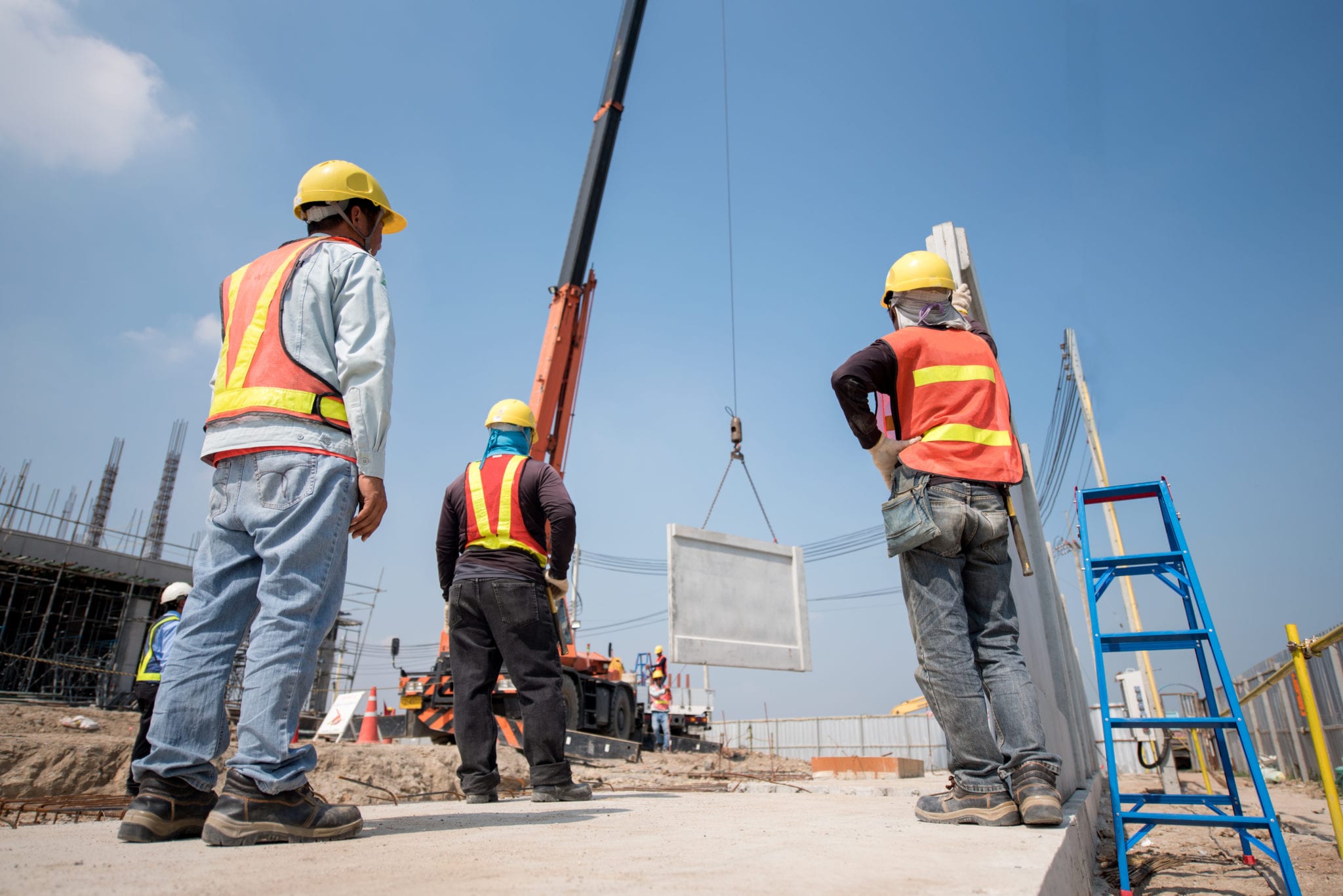
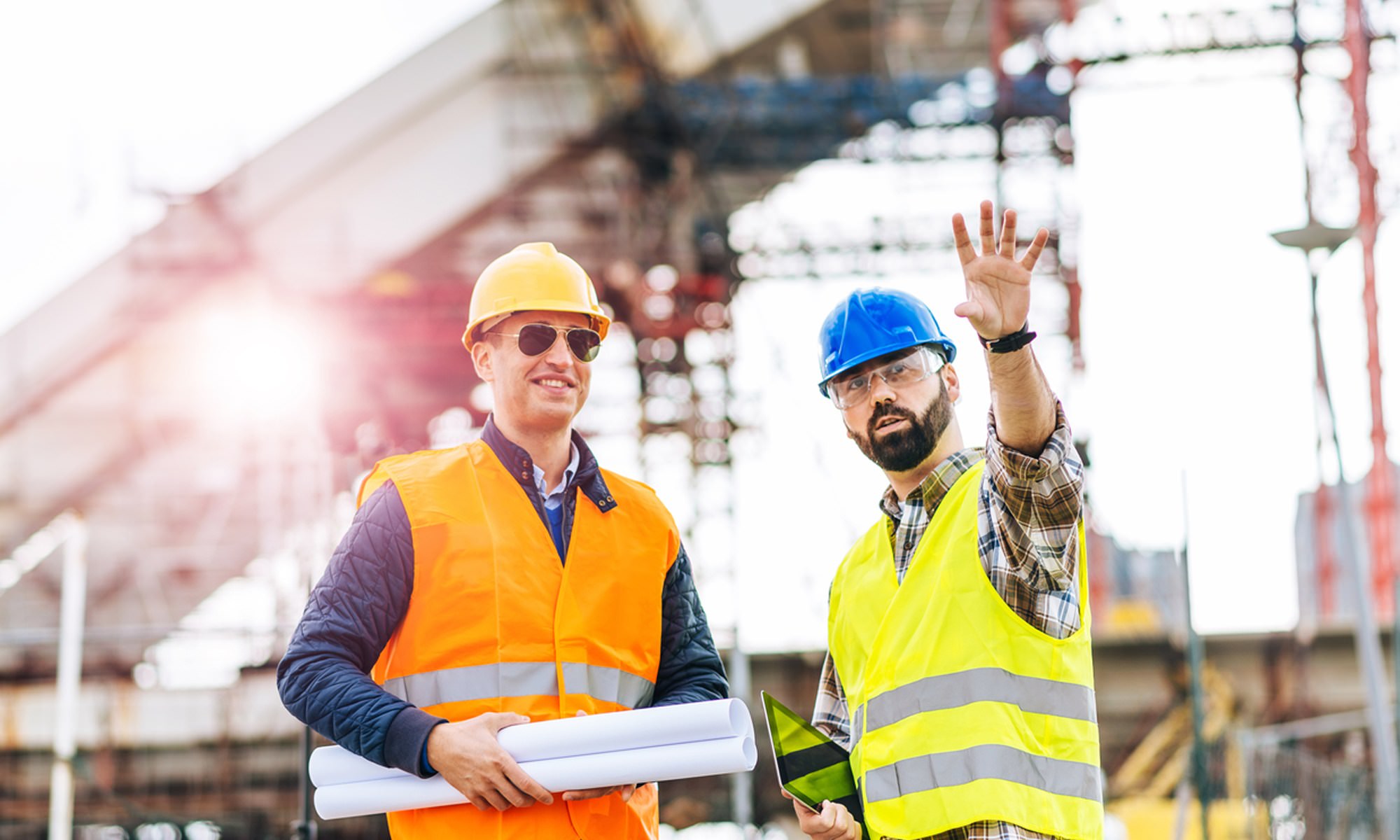
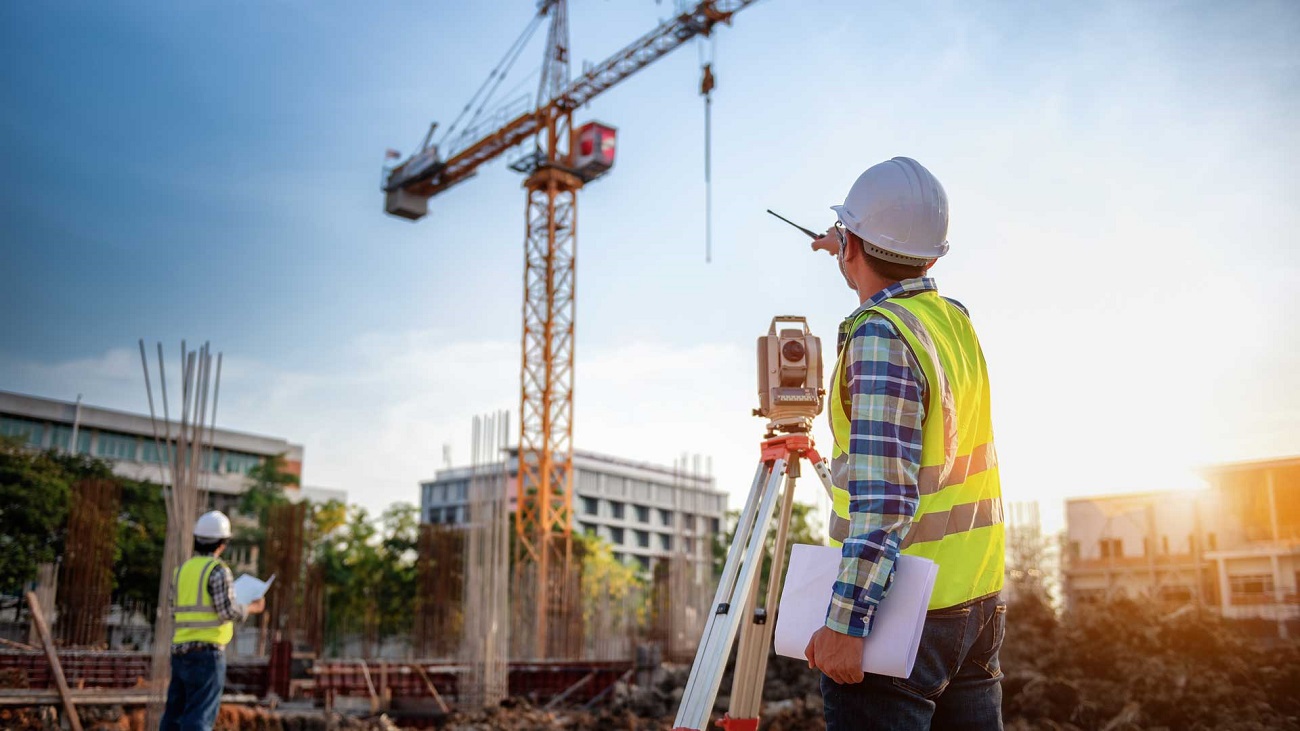
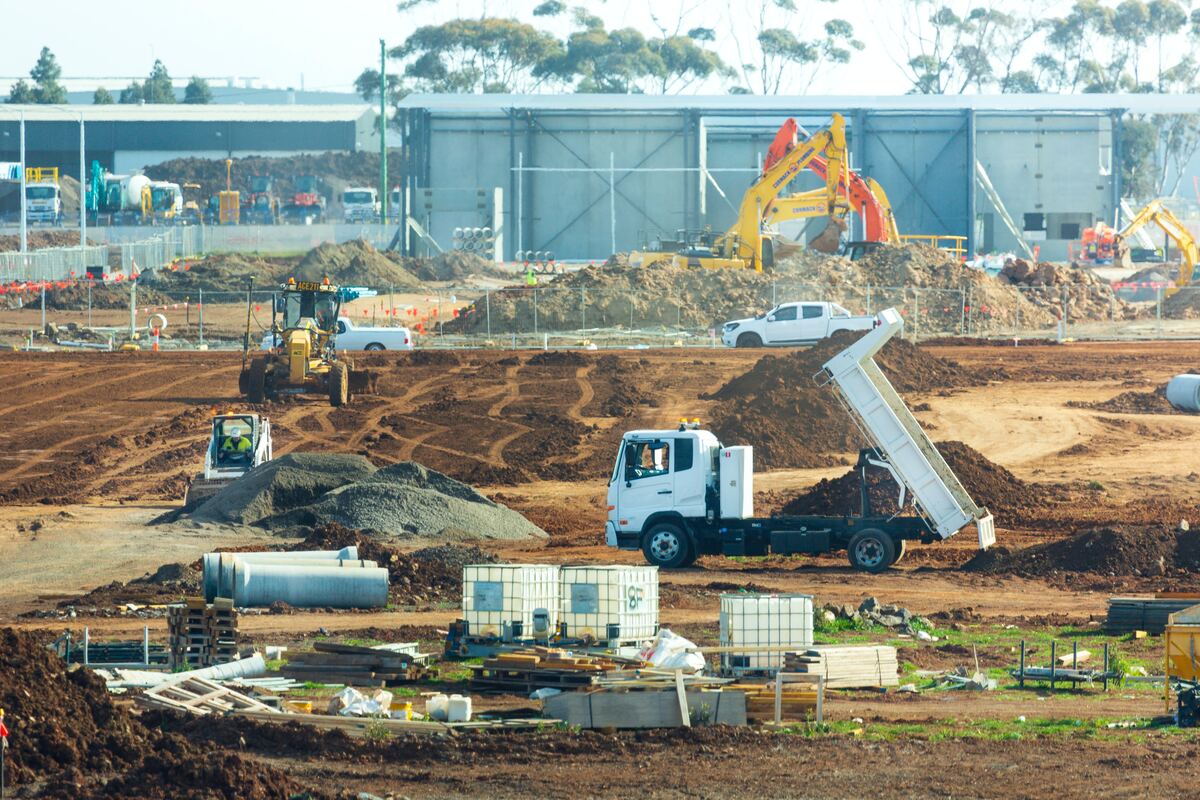
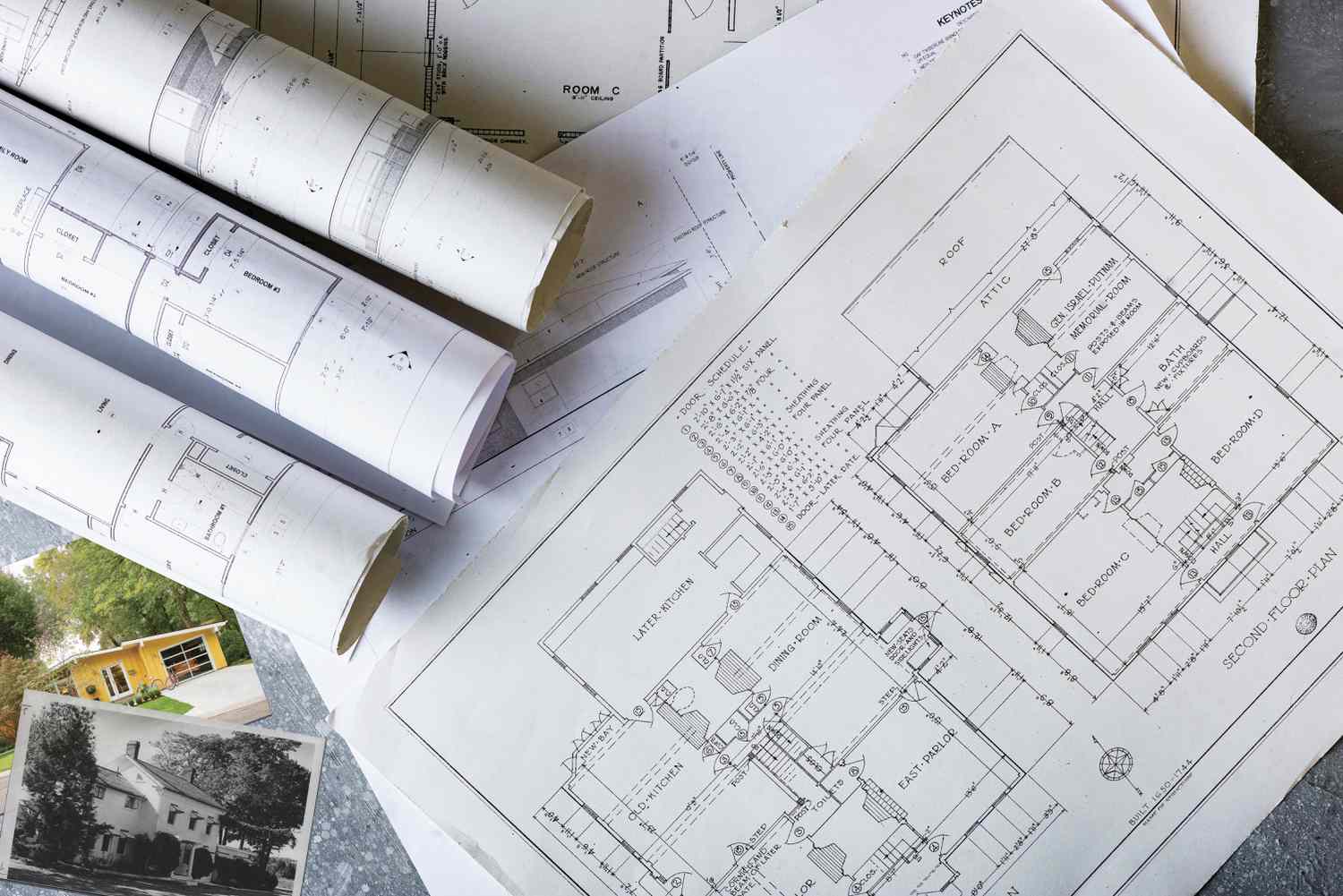
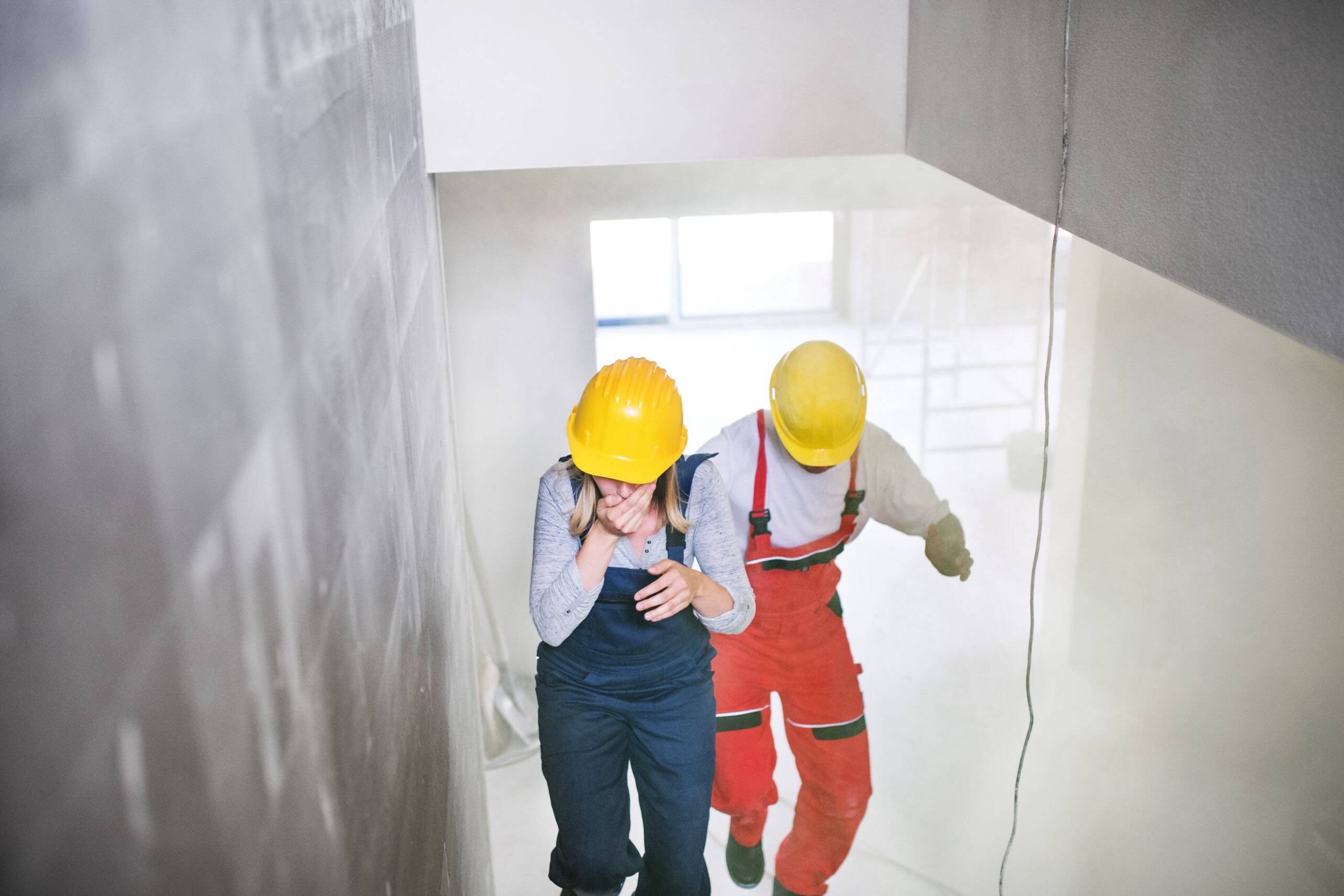
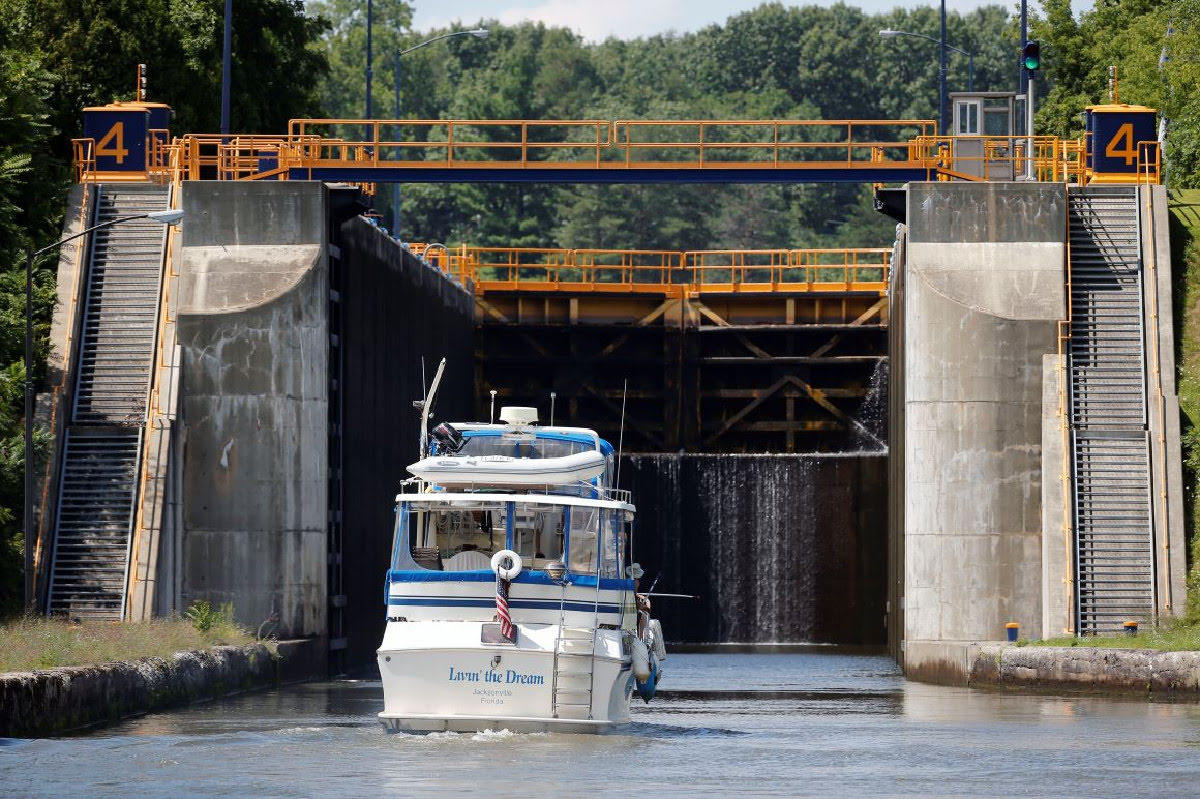

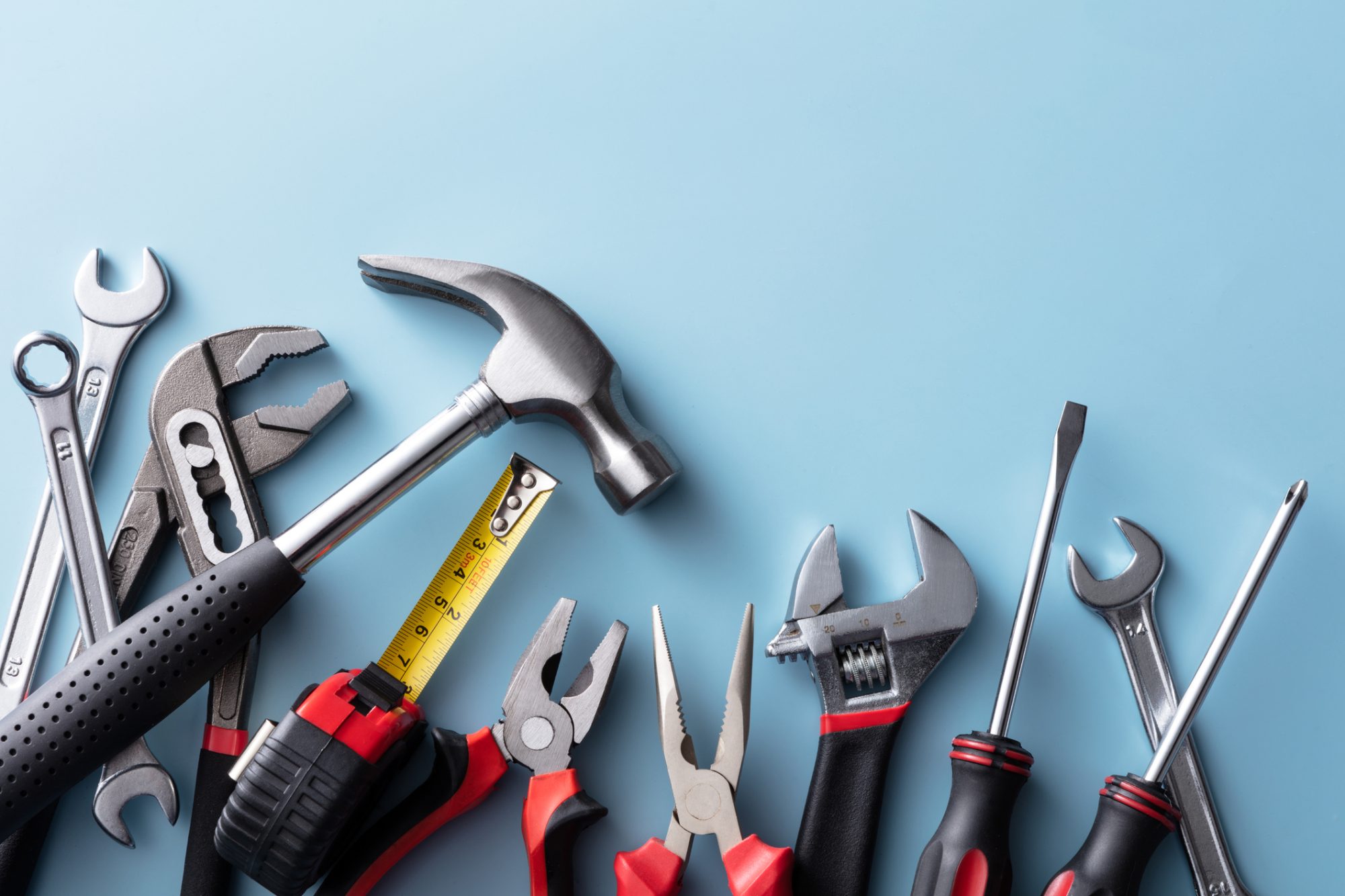
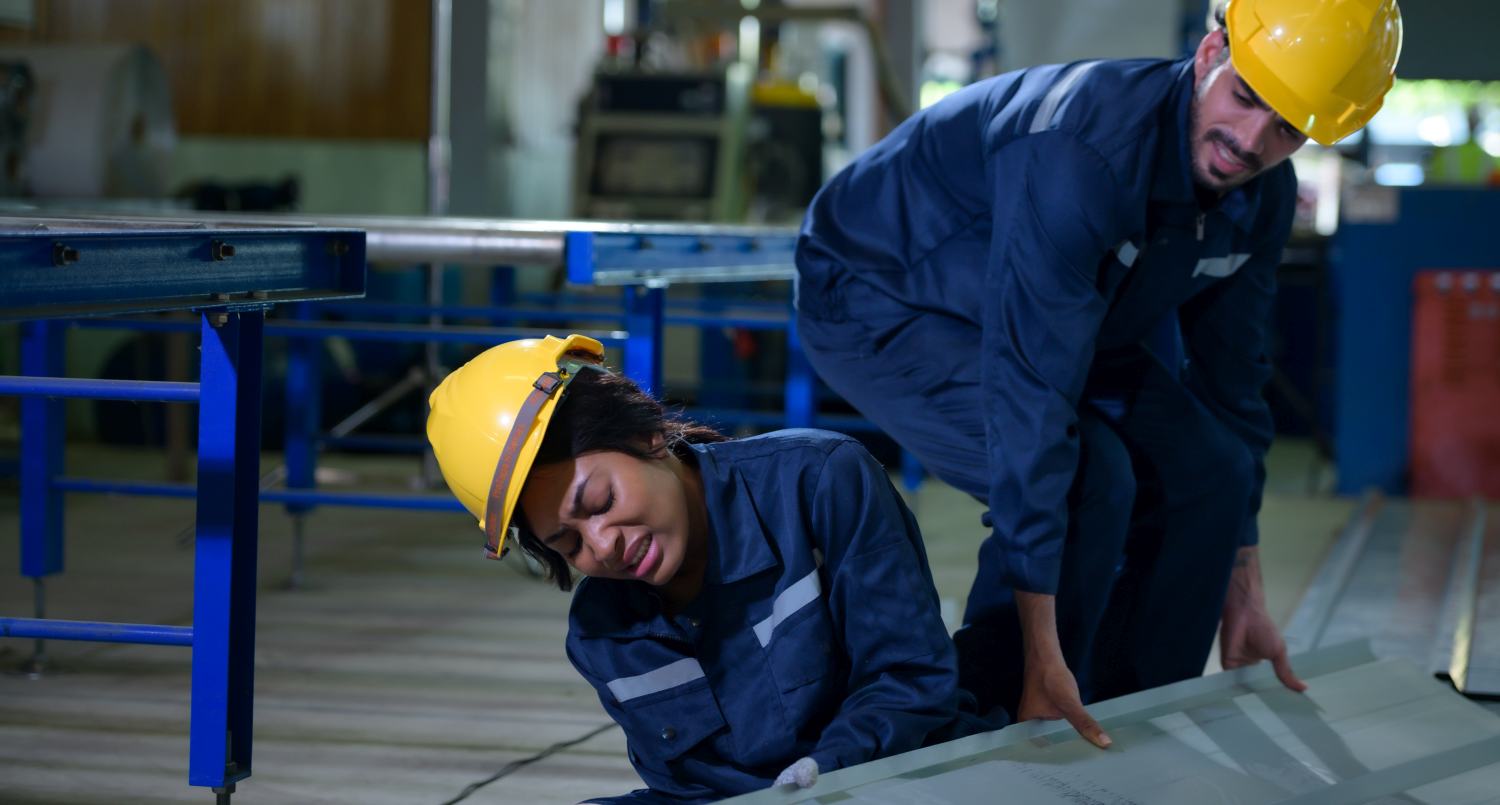
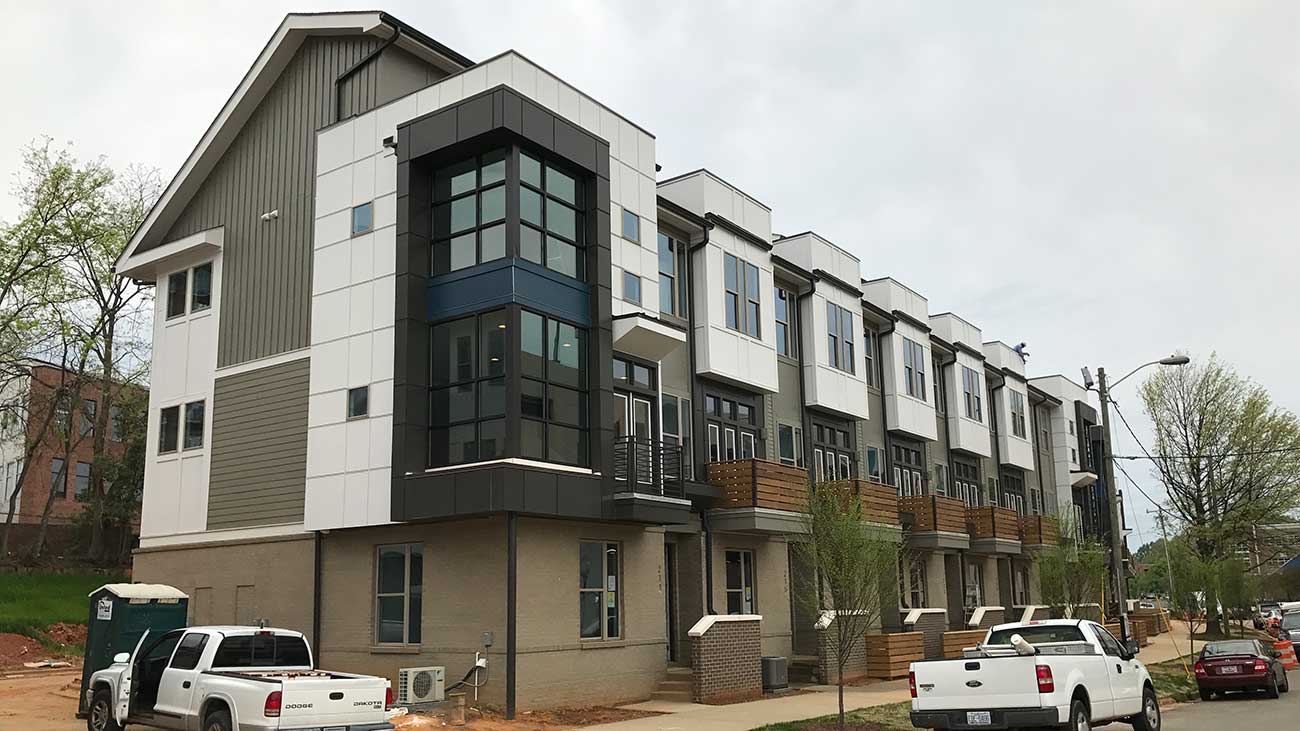

0 thoughts on “What Is The Number One Shield Against Hazards On The Construction Site”